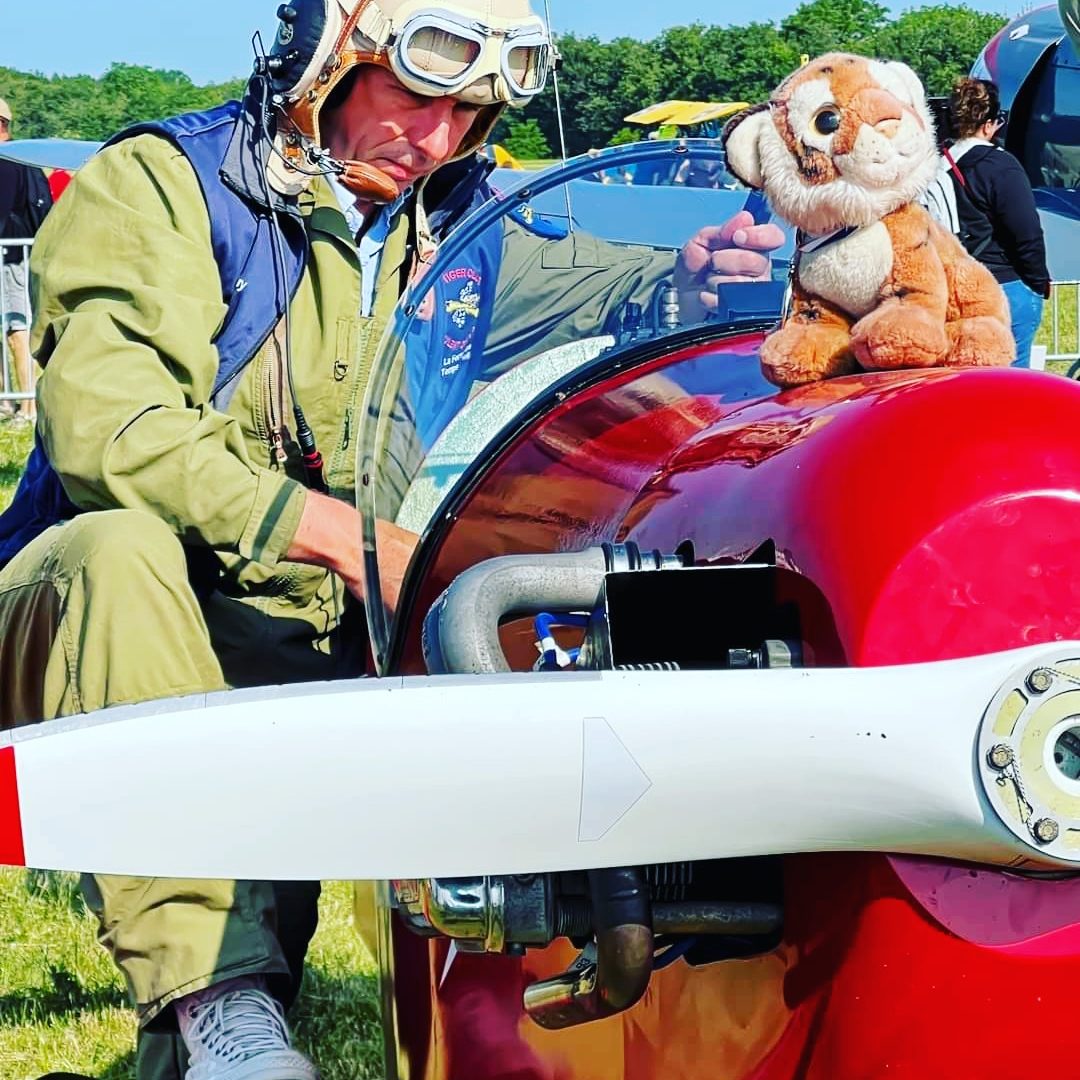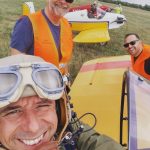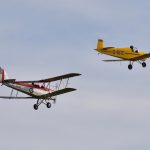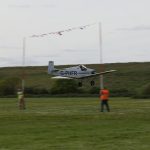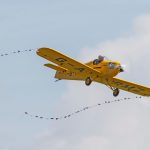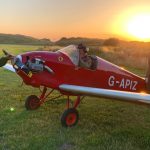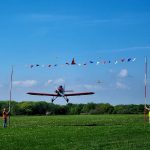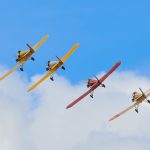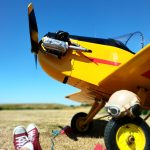The film 'Those Magnificent Men in their Flying Machines' was about a fictious air race that satirizes the early years of aviation. Set in the year 1910, the film follows the race from London to Paris, with £10,000 in prize money (equivalent to £1,500,000 in 2024). The film is noted for its spectacular flying scenes, featuring dozens of period accurate, life-size working aeroplanes.
Directed and co-written by Ken Annakin, the film stars an international ensemble cast, including Stuart Whitman, Sarah Miles, Robert Morley, Terry-Thomas, James Fox, Red Skelton, Benny Hill, Jean-Pierre Cassel, Gert Fröbe and Alberto Sordi. Released in the United Kingdom by 20th Century Fox on June 16, 1965, the film was both a widespread critical and commercial success.
Our heroes of this feature, part of the Tiger Club fly similar tiny aircraft comprised of wood and canvas performing tricks and stunts that are worthy to have been in the film. Every year they head across the channel in the aircraft to display in France, with the journey broken down into 'hops' with spare pilots and equipment following below them.

THE TIGER CLUB
The Tiger Club, located in Upminster was founded in 1957 with the aim of encouraging people to learn the art of flying. The club today teaches the different kinds of sport flying, including aerobatics, formation flying, air racing and display flying.
They welcome any pilot or aviation enthusiast who wishes to fly any of our aircraft, whether as a memorable one-off experience or as a series of lessons to develop new skills and airmanship. We offer pilots the chance to fly what are nowadays unusual types of aircraft, and to perfect the skills required to operate these special planes. It is run by its members and owned by a group of members.
THE TURBULENT TEAM
The Tiger Club's Turbulent Display Team is one of the longest-established flying display teams in the world formed in 1959. The Turbulent team have been an integral part of the Tiger Club's famously colourful contribution to light aviation, during which time the team has brought the excitement of its energetic and flamboyant low-level displays to audiences at hundreds of air shows and events at home and abroad.
Their display consists of a mix of low-level formation, flour-bombing, balloon-bursting and limbo-flying and is virtually unique on the air show circuit today.
THEIR AIRCRAFT
The first Turbulent aircraft arrived at the Tiger Club in 1959 and have been a core fixture at the club following the success of the display team.
A Turbulent doesn’t have a lot of space in it being single seated, powered by VW 1600cc Beetle engines. It only has minor changes from the car engine and ideal for formation display flying.
It can be a cool experince in the cockpit as there is no canopy and the planes are known to ice up quickly, one of the most important controls, is the carburetor heat. Being relatively low powered, they also require careful power management therefore all pilots have to have previous flying experience.
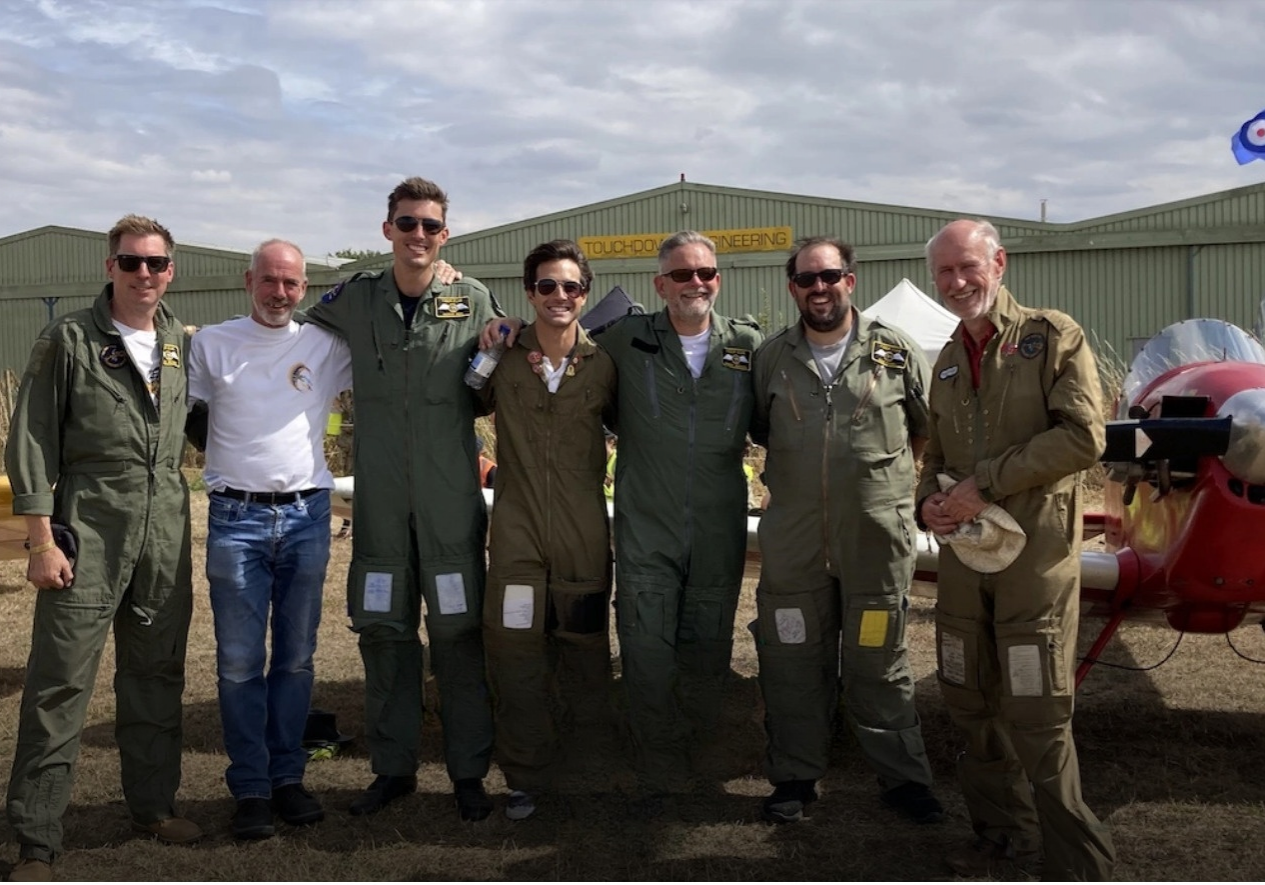
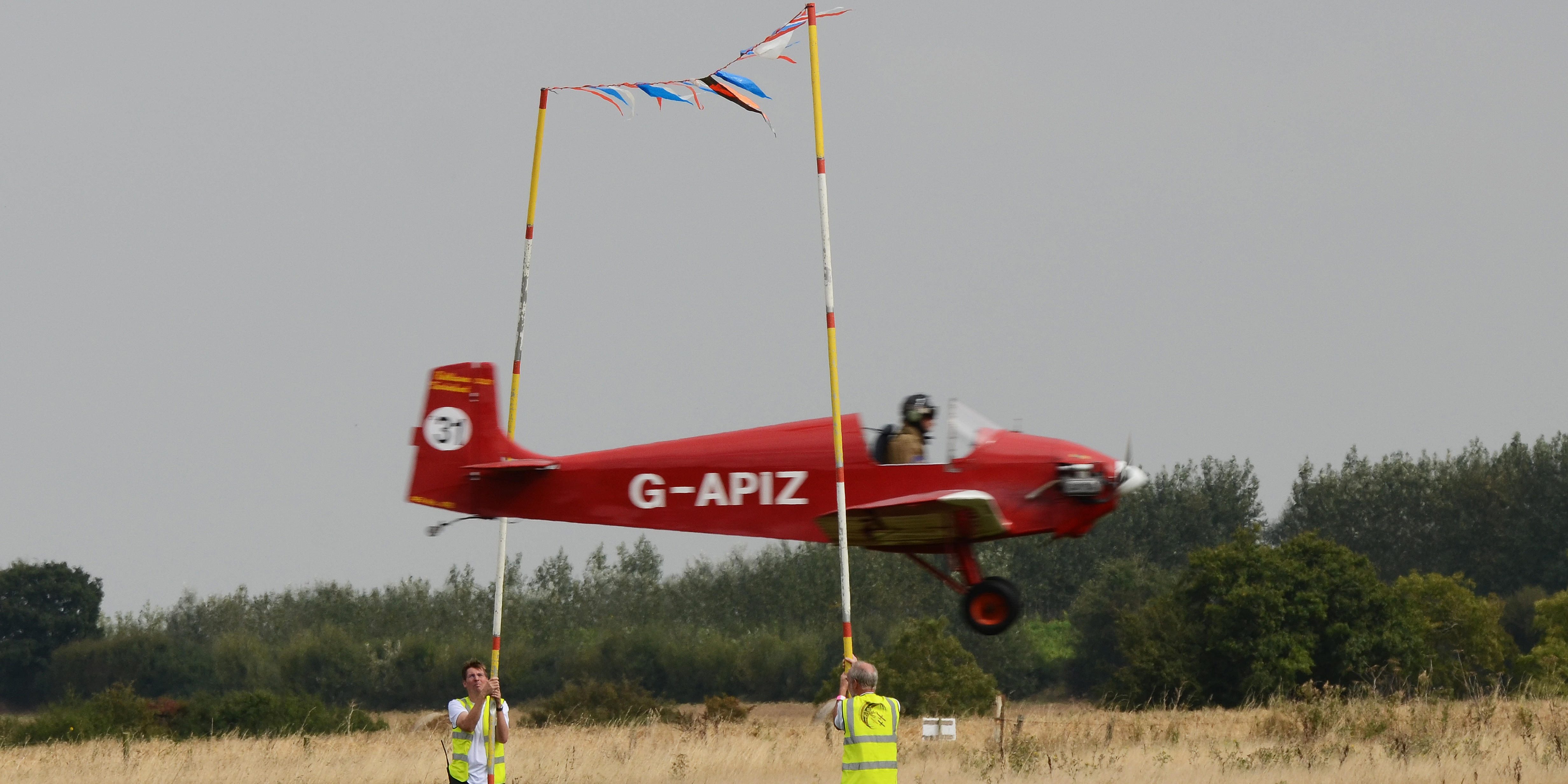
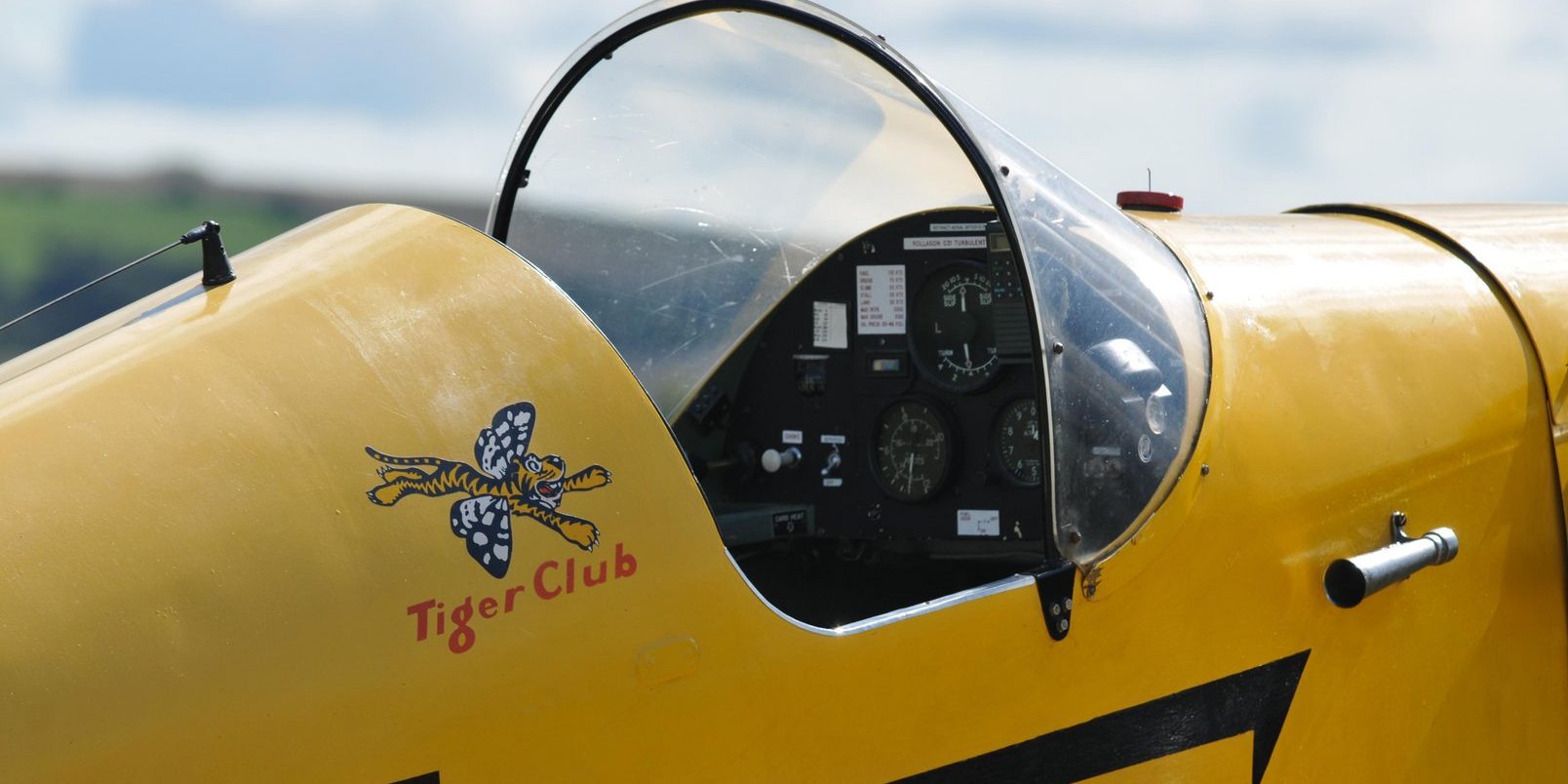

BECOMING A DISPLAY PILOT
Richard Vary, a member of Team Turb and author of 'The Biplane in the garden,' was very kind to answer and provide insights to being a member of this team.
Can you tell us about your background and how you became a display pilot?
I am from an air force family so there was always something whistling past overhead as I grew up. Naturally I signed up for the RAF section in the cadets at school, and they sent me off solo in an aircraft before I was allowed to drive.
What inspired you to pursue aerobatics and flying?
I am fascinated by flight. There is still nothing like the feeling as you open the throttle and watch the ground recede beneath you. Everything looks beautiful from a few thousand feet, the fields, hedgerows, villages and roads, and a peace descends on you as you climb above that.
There is a huge adrenaline rush from formation display flying. All formation activities appeal to something in us, whether it is dancing, playing in an orchestra, or rowing together in time in a rowing eight. But to see another aircraft, transfixed in space, moving up and down in the air currents as we bank and turn, so close that you could reach out and touch it, is a thrill that I don’t think I will ever lose.
What kind of training and qualifications are required to become a display pilot?
The qualifications are not that hard: an ordinary pilots licence and medical, but there is a separate test called a display authorisation where you must demonstrate to an examiner that as a team you are capable and safe. From when Charles Rolls lost his life in a flying display in 1911 to Shoreham just a few years ago, there have been too many accidents at airshows. With each, we have learned rules: heights, speeds and directions that mean if something were to go wrong at any point in the display, nothing will fall into the crowd. The display authorisation checks that pilots know and understand those rules.

INSIGHTS AS A DISPLAY PILOT
How do you handle unexpected challenges or emergencies while performing aerobatic manoeuvres?
We talk them through in advance. At each point of the display we know what we will do if something goes wrong at that point. When four aircraft are very close together, the immediate threat if one has a problem is collision, so we practice escape manoeuvres if that happens. When we practice, of course, we are steely eyed and speak in calm measured voices. When I did have a problem for real (metal fatigue caused the spinner on the front of the aircraft to come apart just after I’d gone through the limbo poles) my voice went up about two octaves.
Can you share any behind-the-scenes stories or insights from your experiences as a display pilot?
Each winter we have to attend a safety symposium at RAF Shrivenham, which is always entertaining. In one group are the RAF Red Arrows team for the year, young, confident and cocky in their immaculate uniforms. In another corner are the Royal Navy pilots, in their dark blue flight suits, neatly trimmed beards, being rude to the Reds. Somewhere in the back corner are the Battle of Britain Memorial flight, keeping themselves to themselves. And in the middle are a bunch of dishevelled civilian pilots, in jeans, oily fingernails, clutching mugs of tea. God knows what they must think of us!
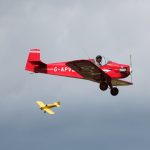
Images from 'Team Turb' & Stock Images

FINAL WORDS

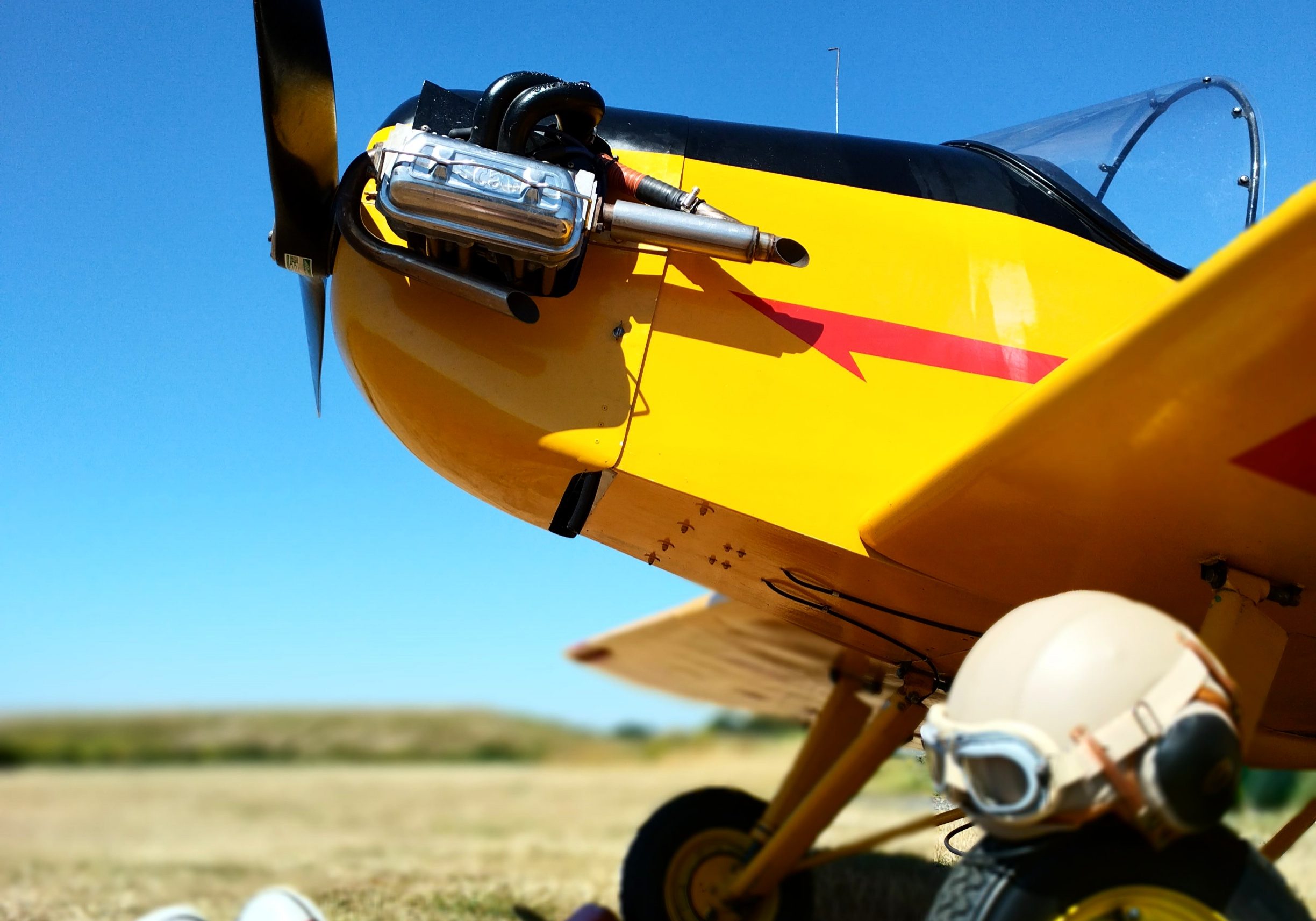
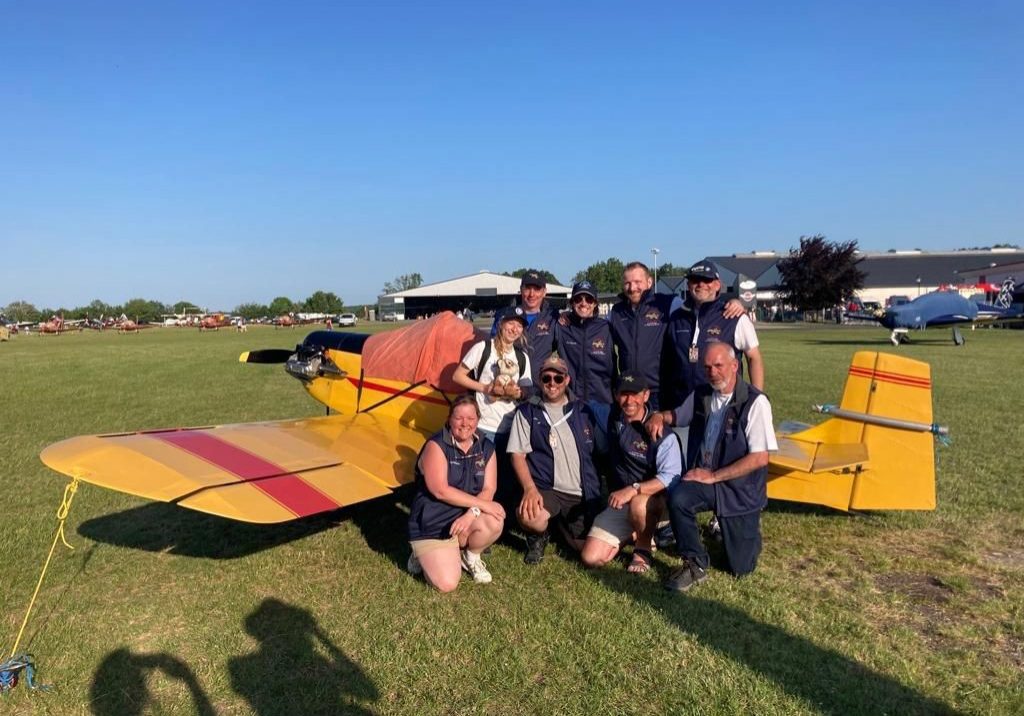
Lastly, what do you love most about flying aerobatics, and what keeps you passionate about it?
I should say the people. There’s a real camaraderie in a display team, and because you have to trust each other, you become close friends. We talk pretty much every day over whatsapp or email, and see a lot of each other in the display season. But for many of us, it is probably the aircraft themselves. They are such simple machines, but with such amazing potential. You get to know them like family or pets, and when one is sick it’s a real worry (and often a long process) until it is back to strength.
OUR FINAL THOUGHTS
Display piloting is not without its risks. The extreme nature of aerobatic flying means that the potential for accidents is higher than in more conventional forms of flying. Pilots must be adept at managing these risks, maintaining a deep understanding of their aircraft's capabilities, and always being prepared for emergency situations.
However, the rewards can be immense. Beyond the adrenaline rush and the applause, pilots often speak of the profound sense of freedom and achievement in mastering such a challenging skill. Many are driven by a deep passion for flying and a commitment to pushing the boundaries of what is possible in an aircraft.
The life of a pilot is marked by a constant pursuit of excellence and safety. It combines the physical challenge of performing complex maneuvers with the mental challenge of precise execution. For those who take up this up, it offers an exhilarating way to experience the limits of both human and aircraft capabilities. It's not just about flying but about performing, each show an opportunity to inspire awe and wonder from those watching from below.

SEE THE TURBULENT TEAM IN ACTION




